277 UMMA Objects
277 UMMA Objects
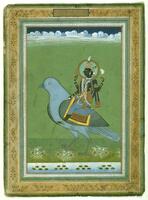
Artist Unknown, India, Rajasthan, Jaipur School
Iconography series: Vishnu mounted on a blue bird
1835 – 1845
Gift of Professor Walter M. and Nesta R. Spink
1988/1.84
![Shiva sits with his consort on a double lotus pedestal. He has six arms, his right three are in varada mudra [a giving gesture], holds a rosary and an arrow. His left arms cup his consorts left breast and hold a lotus flower and a bow. He sits in royal ease, with one leg pendant. He wears bracelets, armlets, necklaces, earrings, and a sacred thread that stretches form his left shoulder down past his waist. On his head he wears an elaborate jatamukuta, a crown interlaced with his matted locks. Parvati sits upon his knee with one leg tucked under her and the other pendant. She is also adorned with jewelry, but wears a more modest diadem at the front of her head.<br /> Shiva sits with his consort on a double lotus pedestal. He has six arms, his right three are in varada mudra [a giving gesture], holds a rosary and an arrow. His left arms cup his consorts left breast and hold a lotus flower and a bow. He sits in royal ease, with one leg pendant. He wears bracelets, armlets, necklaces, earrings, and a sacred thread that stretches form his left shoulder down past his waist. On his head he wears an elaborate jatamukuta, a crown interlaced with his matted locks. Parvati sits upon his knee with one leg tucked under her and the other pendant. She is also adorned with jewelry, but wears a more modest diadem at the front of her head.<br />](/media/W1siZiIsIjIwMjIvMDUvMjUvMnF5ZHF1aXpyaV9kZWZhdWx0LmpwZyJdLFsicCIsInRodW1iIiwiMjQweDIwMCJdXQ?sha=5e9565cd110a2b87)
Indian (Indian (South Asian))
Uma-Maheshvara, a seated Shiva and Parvati (Uma)
12th century
Museum purchase for the James Marshall Plumer Memorial Collection
1964/2.85
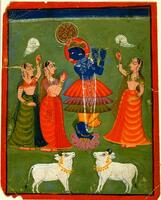
Artist Unknown, India, Rajasthan, Mewar School
Krishna Fluting
1695 – 1705
Gift of Mr. George P. Bickford for the James Marshall Plumer Memorial Collection
1964/2.120
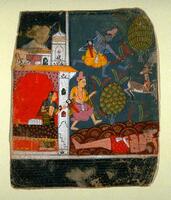
Artist Unknown, India, Central India, Malwa School
Râmâyana manuscript page: Rama kills the deer (folio no. 31)
1635 – 1650
Gift of Mr. George P. Bickford for the James Marshall Plumer Memorial Collection
1964/2.111

Indian (Indian (South Asian))
Hanuman
18th century
Gift of Dr. and Mrs. Leo S. Figiel and Dr. and Mrs. Steven J. Figiel
1980/2.261
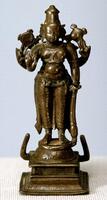
Indian (Indian (South Asian))
Vishnu
18th century
Gift of Dr. and Mrs. Leo S. Figiel and Dr. and Mrs. Steven J. Figiel
1981/2.61
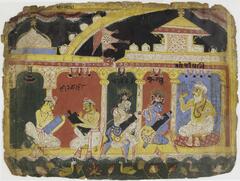
Artist Unknown, India, Uttar Pradesh, Chaurapancasika Style
Bhagavata Purana series: Krishna and Balarama Studying with the Brahman Sandipani
1525 – 1550
Gift of Dr. and Mrs. Leo S. Figiel and Dr. and Mrs. Steven J. Figiel
1983/2.104
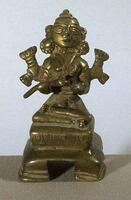
Indian (Indian (South Asian))
Annapuma
1500 – 1799
Gift of Dr. and Mrs. Leo S. Figiel and Dr. and Mrs. Steven J. Figiel
1979/2.78
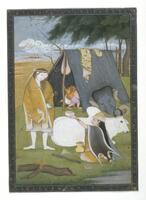
Artist Unknown, India, Punjab Hills, Kangra School
Shiva and his family
1790 – 1800
Gift of Dr. Walter R. Parker
1942.4
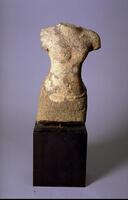
Khmer (Khmer (general))
Uma, torso (Khmer-Bayon style)
1100 – 1299
Gift of John Adams Thierry in memory of Louis Sidney Thierry
1993/2.49
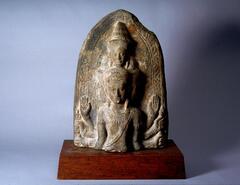
Thai
Shiva stele (Khmer-Lopburi Style)
14th century
Gift of John Adams Thierry in memory of Louis Sidney Thierry
1993/2.50
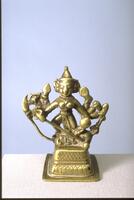
Indian (Indian (South Asian))
Durga
1800 – 1999
Gift of Dr. and Mrs. Leo S. Figiel and Dr. and Mrs. Steven J. Figiel.
1975/2.107
Loading…
